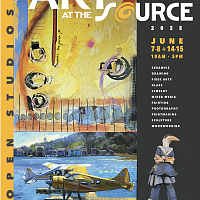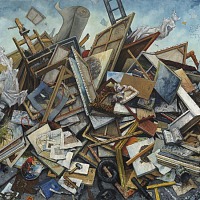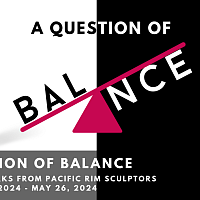There are reportedly over 1,000 tracks in his Paisley Park vault, and in June, Tidal added 15 Prince albums to its streaming library.
Also this spring, the estate of Detroit hip-hop producer J Dilla released The Diary, the latest in a long string of posthumous albums both authorized and unauthorized. The story of The Diary demonstrates just how complicated finishing an artist's uncompleted work can be.
Even if you're not a hip-hop aficionado, you've likely heard J Dilla's beats on somebody else's record. High-profile artists like De La Soul, Erykah Badu, D'Angelo and The Pharcyde all sought him out in the late '90s and early 2000s. The things that defined his sound — an ear for eclectic samples from across genres, his off-kilter sense of timing — were born of an obsession with music that lasted almost literally from cradle to grave.
"When he was 2 years old, he was spinning records in the park," says Dilla's mother, Maureen "Ma Dukes" Yancey. "With little 45s on his arms, like I got these bracelets. His little arm would be through with 45s the whole way up, and his little Fisher Price turntable."
Even as a toddler, Dilla only ever focused on one thing. "This is all he did," Yancey says. "You'd think that he'd want to incorporate blocks, or the little boy things that we bought, but he wasn't interested in any of that stuff. Only the music."
That focus continued when Dilla was a teenager and then a young adult. Every week, he went to record shops to find new music, then scoured each acquisition for sonic gems — a snare drum here, a horn solo there — that he could repurpose to build his meticulously crafted beats.
Over more than two decades, Dilla's basement studio in his mother's home filled with cassette tapes. He kept working even after he was diagnosed with a rare blood disease at the age of 29. He finished Donuts, the record considered by many fans to be his crowning achievement, on a synthesizer he kept next to his hospital bed. The album came out on his 32nd birthday, just three days before he died.
That's where things got complicated. Dilla left behind a will that named his mother, brother and two infant daughters as his heirs and his manager as the executor of his estate. But he also left hundreds of thousands of dollars in IRS debt. None of the money from record sales could go to his heirs or to pay the costs of his medical bills until that debt was settled, even though his final album was selling better than anyone expected.
"Donuts went from being a record that we were struggling to get ... to a record that we couldn't keep in print," says Eothen Alapatt, a Los Angeles producer who worked closely with Dilla on his final projects.
Alapatt was eventually hired as the creative director of the J Dilla estate. He says that in the year following Dilla's death, no one was sure of what to do, and a lot of his music was scattered. Then, over the following years, J Dilla releases started appearing — on small imprints, from former collaborators and as internet bootlegs. "People started digging into their archives and thinking about ways that it could be repackaged in light of his death, and the celebrity he became," Alapatt says.
Even Dilla's mother and brother released records, against the estate's wishes, and Maureen Yancey set up a separate J Dilla Foundation to keep her son's legacy alive. "We just wanted to keep the music flowing in the hearts and minds of people," she says.
After disagreements over the direction of the estate — and several costly lawsuits — the executor finally resigned. Alex Borden, a California estate attorney, was named the new executor. "One of the tasks that we were faced with was gathering or collecting the various media that existed in the world ... [to] take a look at what we had, catalogue it and determine whether it could be used or exploited to make money," Borden explains.
Before he died, Dilla had worked on a solo album that was originally supposed to come out on MCA Records in 2002. That was the album finally released this spring as The Diary. It was supposed to be his major-label debut as a frontman, rapping over beats produced by other hand-selected collaborators. But in the end, MCA decided to shelve the record before it was finished.
Engineer Dave Cooley, who was eventually brought in to help piece the album together, says that sifting through Dilla's musical archives was like searching for an unpublished novel in someone's house after they'd passed away. "In this drawer we found a few pages, at this desk we found a few pages — scattered all over the house," Cooley says. "Some overlap between things. Things are named strangely. It was a lot of detective work to figure out, okay, which version is the ultimate version that was supposed to end up on The Diary."
Cooley and Alapatt spent the better part of 10 years working with Dilla's collaborators, choosing among versions of each song and stitching together a record that they thought would be as close to Dilla's original vision as possible. Still, the album's release this spring was not welcomed by everyone. Alapatt says some fans wanted another instrumental beat tape. But, he says, "that would be a historical reimagining, rather than seeing through the vision of a maverick genius. This record, The Diary -- even though I see polarizing reaction — is a statement that he wanted to make."
On the other hand, Maureen Yancey did not approve of including one collaborator who'd since fallen out with the family — and she thinks her son would have backed her up. "I think after death, people tend to say that they know what a person wanted," she says. "But ... I raised him and I spent the last days with him. And he died in my arms. And I knew what he would have wanted."
No one can really know whether J Dilla would endorse the albums that have been released since he died. But the fact remains that he's better known now than he was in life. Thanks to Maureen Yancey's efforts, when the new Smithsonian National Museum of African American History & Culture opens in Washington, D.C., this fall, her son's sampling machine will be there to bear testament to the music he could never stop making.
MICHEL MARTIN, HOST:
We're going to turn now to a question. What happens to a prolific artist's creative work after he or she dies? The recent death of Prince has raised that question in a big way. There are reportedly more than 1,000 tracks in Prince's vault, causing fans to wonder what will happen to all that material? Earlier this year, the estate of Detroit hip-hop producer J Dilla released "The Diary." That posthumous album comes 10 years after his death. As NPR's Alexi Horowitz-Ghazi reports, the story of J Dilla's latest record gets to the heart of just how complicated it can be to finish an artist's incomplete work.
ALEXI HOROWITZ-GHAZI, BYLINE: Unless you're a hip-hop aficionado, chances are that if you've heard J Dilla's music, it was on somebody else's record.
(SOUNDBITE OF SONG, "STAKES IS HIGH")
DE LA SOUL: (Rapping) Stakes is high.
HOROWITZ-GHAZI: High-profile artists like De La Soul, Erykah Badu, D'Angelo and The Pharcyde all sought him out in the late '90s and early 2000s.
(SOUNDBITE OF SONG, "DIDN'T CHA KNOW")
ERYKAH BADU: (Singing) Oh, hey.
(SOUNDBITE OF SONG, "RUNNIN'")
THE PHARCYDE: (Singing) Keep running away.
HOROWITZ-GHAZI: The things that defined his sound and ear for eclectic samples from across genres and his off-kilter sense of timing were born of an obsession with music that lasted almost literally from cradle to grave.
MAUREEN YANCEY: When he was 2 years old, he was spinning records in the park in his little Fisher-Price turntable.
HOROWITZ-GHAZI: Maureen Yancey or Ma Dukes is Dilla's mom. His given name was James Yancey. She says that even as a toddler her son really only ever focused on one thing.
YANCEY: This is all he did. This was his activity for the day. Now, mind you, you would think that you would want to incorporate blocks or little boy things that we had bought, but he wasn't interested in any of that stuff, only the music.
HOROWITZ-GHAZI: And that continued as a teenager and young adult. Every week, he'd go to record shops to find new music, and he'd scour each acquisition for sonic gems - a snare drum here, a horn solo there - that he could repurpose to build his meticulously crafted beats. Over more than two decades, the basement studio in his mother's home filled with cassette tapes and records. And even after he was diagnosed with a rare blood disease at the age of 29, he kept working on the music.
(SOUNDBITE OF J DILLA SONG, "THE DIFF'RENCE")
HOROWITZ-GHAZI: He finished "Donuts," the record considered by many fans to be his crowning achievement on a synthesizer he kept next to his hospital bed. The album came out on his 32nd birthday, just three days before he died.
(SOUNDBITE OF SONG, "U-LOVE")
J DILLA: (Singing) Just because I really love you. Just because I really love you, love you...
HOROWITZ-GHAZI: And that's where things got complicated. Dilla did leave behind a will, naming his mother, brother and two infant daughters as his heirs and his manager as the executor of his estate. But he also left hundreds of thousands of dollars in IRS debt, and none of the money from record sales could go to his heirs or to pay the cost of his medical bills until that debt was settled, even as his final album was selling better than anyone expected.
EOTHEN ALAPATT: "Donuts" went from being a record that we were struggling to get our distributor to commit to shipping 10,000 units of to a record that we couldn't keep in print.
HOROWITZ-GHAZI: Eothen Alapatt is an LA music producer who worked closely with Dilla on his final projects. He was eventually hired as the creative director of the J Dilla estate, but he says in the year following Dilla's death, no one was sure what to do. And a lot of his music was scattered.
ALAPATT: A lot of people started digging into their archives and started realizing what Dilla music they had and sort of thinking about ways that it could be repackaged in the wake of his death and the celebrity that he became.
HOROWITZ-GHAZI: Over the following years, J Dilla releases started appearing from small imprints and former collaborators to Internet bootlegs, even his mother and brother released records against the estate's wishes. And Maureen Yancy set up a separate J Dilla Foundation to keep her son's legacy alive.
YANCEY: We just wanted to keep the music flowing in the minds and hearts of people.
HOROWITZ-GHAZI: After disagreements over the direction of the estate and several costly lawsuits, the executor finally resigned.
ALEX BORDEN: I tend to get appointed when there is no clear direction.
HOROWITZ-GHAZI: Alex Borden, a California state attorney, was named the new executor.
BORDEN: One of the tasks that we were faced with was gathering the various media that existed in the world in order to bring it in, catalogue it and determine whether it could be used or exploited to make money.
HOROWITZ-GHAZI: One project was a solo album that was recorded for MCA Records in the early 2000s. That was the album finally released as "The Diary."
(SOUNDBITE OF SONG, "THE SHINING PART 1")
J DILLA: (Rapping) Bling, bling, keep me on shine, while I make the ching-ching.
UNIDENTIFIED ARTIST: (Singing) When I raise them in the sky, shine so bright it'll blind your eyes.
HOROWITZ-GHAZI: It was supposed to be his major label debut, featuring Dilla rapping over beats produced by other hand-selected collaborators. But in the end, MCA decided to shelve it before it was fully finished.
Dave Cooley is an engineer who was eventually brought in to help piece the album together. He says that sifting through Dilla's musical archives was like searching for an unpublished novel in someone's house after they passed away.
DAVE COOLEY: In this drawer - we found a few pages at this desk. We found a few pages scattered all over the house. Some overlap between things. Things are named strangely. You know, it was a lot of detective work to figure out which version is the ultimate version that was supposed to end up on "The Diary."
HOROWITZ-GHAZI: Cooley and Eothen Alapatt spent the better part of 10 years working with Dilla's collaborators, choosing between versions of each song and piecing together a record they thought would be as close to Dilla's original vision as possible.
(SOUNDBITE OF SONG, "THE INTRODUCTION")
J DILLA: (Rapping) First, let me introduce myself. My peeps call me Dilla known to write and produce myself. It's Dilla bringing the pain and bringing the truth. If you bring it to J, then you bring it to you.
HOROWITZ-GHAZI: The album's release this spring was not welcomed by everyone. Alapatt says some fans wanted another collection of the instrumental beats that had made Dilla popular. But, he says...
ALAPATT: That would be a historical reimagining rather than seeing through the vision of a maverick genius. This record, "The Diary," even though I see polarizing reaction is a statement he wanted to make.
HOROWITZ-GHAZI: But Dilla's mom, Ma Dukes did not approve of including one collaborator who had since fallen out with the family. And she thinks her son would have backed her up.
YANCEY: I think after death, people tend to say they know what a person wanted, but nobody knows Dilla like his mom that gave birth to him. I raised him, and I've spent the last days with him, you know. And he died in my arms, and I knew what he would've wanted.
HOROWITZ-GHAZI: At this point, no one can really know whether J Dilla would approve of the albums that have been released since he died. But the fact remains that he's better known now, than he was in life. And thanks to Maureen Yancey's efforts, when the new Smithsonian National Museum of African-American History and Culture opens in Washington, D.C., this fall, her son sampling machine will be there to bear testament to the music he never could stop making. Alexi Horowitz-Ghazi, NPR News. Transcript provided by NPR, Copyright NPR.

 Live Radio
Live Radio







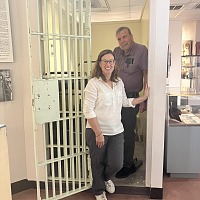
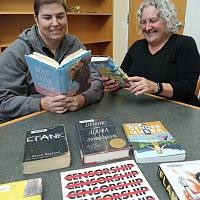
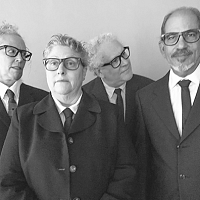

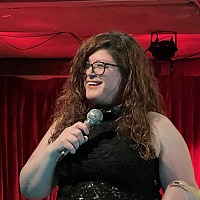
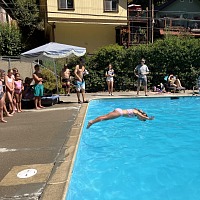
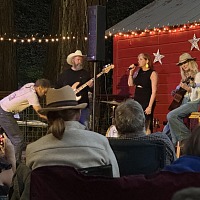

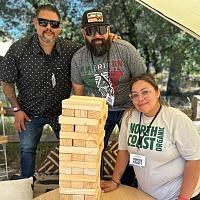


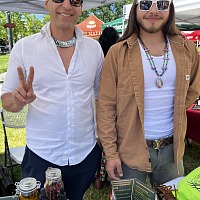




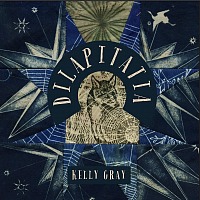

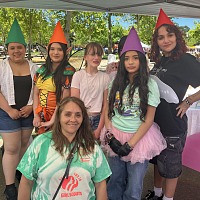
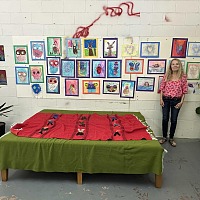



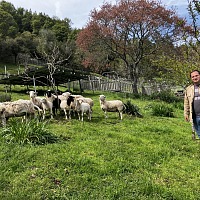

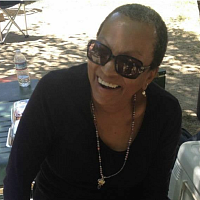




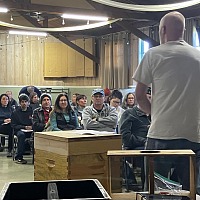






































































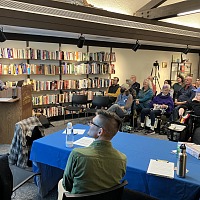









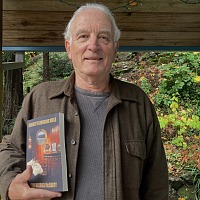




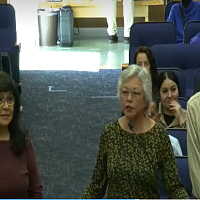








 Satri Pencak is an independent art curator with an M.A. in Art History. She writes about the visual arts for her website,
Satri Pencak is an independent art curator with an M.A. in Art History. She writes about the visual arts for her website, 
